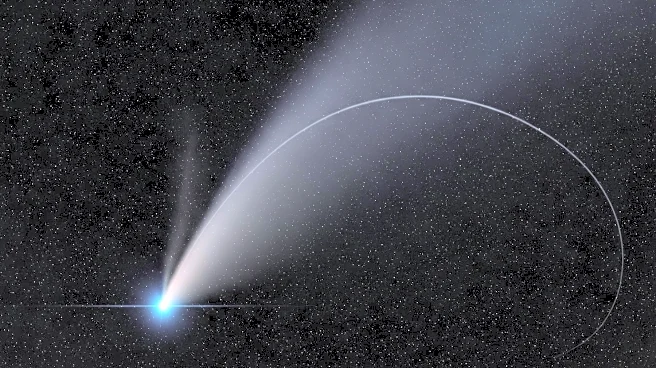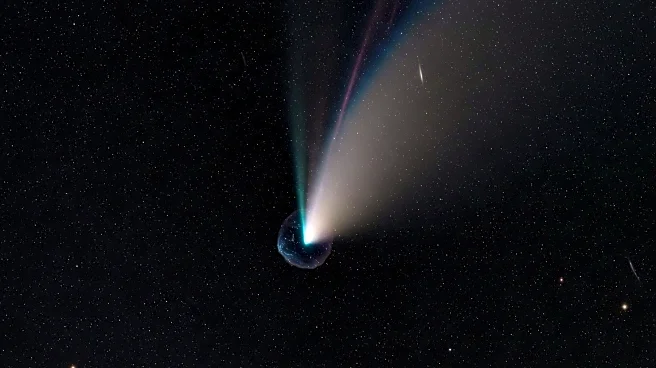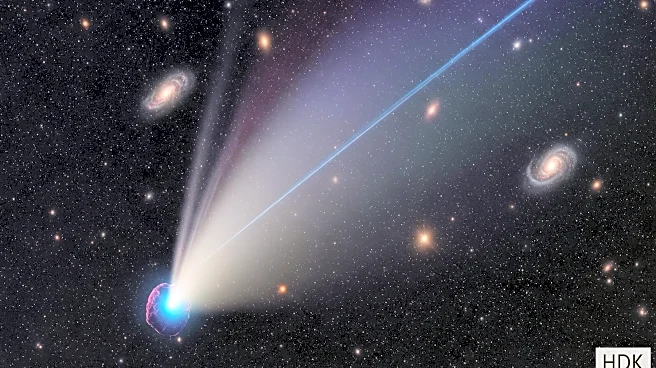What's Happening?
The Mount Lemmon Observatory in the United States has discovered a new comet, C/2025 A6 (Lemmon), which is expected to be visible to the naked eye in October 2025. Initially identified as an asteroid in January 2025, the object was later confirmed to be a comet with a nucleus diameter of 2.2 km. The comet's brightness increased unexpectedly from July to August, prompting revised forecasts. It is currently located in the constellation Lynx and will move through several constellations, including Leo Minor and Ursa Major, before reaching its closest point to Earth on October 21. The comet's brightness is predicted to reach a magnitude of 2, making it potentially as bright as Polaris.
Why It's Important?
The visibility of Comet C/2025 A6 (Lemmon) presents a unique opportunity for both amateur and professional astronomers to observe a celestial event that is not frequently visible to the naked eye. The comet's unexpected brightness increase highlights the challenges in predicting comet behavior, which can provide valuable insights into the composition and dynamics of such celestial bodies. This event also serves as a reminder of the ongoing contributions of observatories like Mount Lemmon in advancing our understanding of the solar system. The comet's visibility could inspire public interest in astronomy and encourage educational activities related to space science.
What's Next?
As Comet C/2025 A6 (Lemmon) approaches its closest point to Earth, astronomers and enthusiasts will continue to monitor its brightness and trajectory. Observations will help refine models of comet behavior and contribute to the broader understanding of cometary science. The comet will pass its perihelion on November 8, after which it will become visible in the Southern Hemisphere. The continued study of this comet may lead to further discoveries about its composition and the processes that govern cometary activity.











